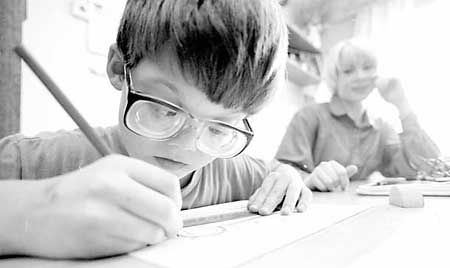Walking in the fresh air prevents the development of myopia
Last reviewed: 20.11.2021

All iLive content is medically reviewed or fact checked to ensure as much factual accuracy as possible.
We have strict sourcing guidelines and only link to reputable media sites, academic research institutions and, whenever possible, medically peer reviewed studies. Note that the numbers in parentheses ([1], [2], etc.) are clickable links to these studies.
If you feel that any of our content is inaccurate, out-of-date, or otherwise questionable, please select it and press Ctrl + Enter.
The longer a child or teenager is in the open air, the less likely that he will develop or will progress myopia.
Myopia (aka myopia) is a visual defect in which the image falls not on the retina of the eye, but in front of it, which is the cause of the increased optical strength of the refractive system of the eye and, consequently, excessive focusing. Thus the person well sees near, but it is bad - far. The main risk factor for myopia is a poor vision of both parents. If the time is not taken, the disease progresses, which can lead to irreversible changes in the eye and a significant loss of vision.

Scientists from the University of Cambridge (Great Britain) reviewed 23 papers and meta-analysis of the results of 7 one-time studies. Taking into account the independent variables, they found that every additional hour in the street a week reduces the likelihood of near-sightedness in children by 2%.
The data of three prospective group studies allowed to obtain the estimated risk of myopia incidence according to the amount of time spent on the street. In addition, in three studies (two prospective group and one randomized controlled), it was found that increasing the duration of walking significantly reduces the progression of myopia.
The findings generally indicate that a regular long stay in the open air can be a simple tool to reduce the likelihood of developing myopia and its progression in children and adolescents, the researchers summarize.
In recent decades, the number of people with myopia has increased dramatically. People in glasses became an integral part of time; around the world, glasses are worn by about 1 billion people.

